Swarf Dwarf
Plastic
- Joined
- Jan 22, 2014
- Location
- My own private Idaho, USA
Hello,
I've been lurking in the shadows here for a long time but this will be my first post.
I'm waking up an old Martin lathe that's been in storage by a previous owner. I am about to connect its twelve-lead, three-phase motor to a 240V, three-phase mains supply. I have a basic knowledge of electricity but before trying what I suspect is correct and flipping the switch, I'd like to ask those having more experience to consider my assumptions. The motor has a data plate indicating that it is compatible with either 220 or 440V three-phase; there is however no diagram or schematic anywhere explaining connection of the motor for different mains voltages.
I've contacted the motor manufacturer (Schorch of Germany) but they were "not able to find documentation on this motor because it is at least 40 years old". They also stated that "this is a 3-phase motor with only “one winding” (4 poles/one speed) but in a special design for 2 different voltages, double delta and delta".... One winding??? Closing comment: "Please check the windings by an ohm meter and put the right ones together."
The previous user had the twelve leads coming from the motor's winding(s) separated into three groups, each group consisting of four leads; I don't know for certain if it was last run on 220 or 440V. I can use an ohm meter to verify that the leads in each group go to a common winding; I have not yet done this. I can then refer to shematics from other manufacturers of 12-lead motors wired for 220V (see last image; to be clear, the diagram is from another motor manufacturer). From this, I can deduce that the wiring of my motor is most likely already correctly configured for 220V three-phase.
The leads are individually labeled and and all markings are clearly legible. The junction terminals have little stamped brass identification tags. Three of these tags are attached to the three terminals being used; the rest were laying loose in the junction box.
Here are some images:
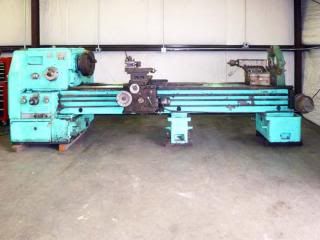
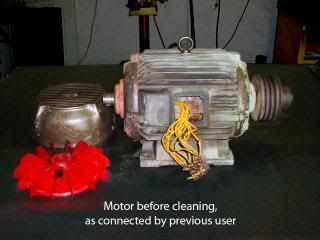

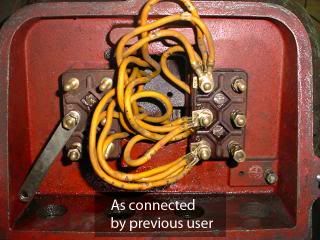
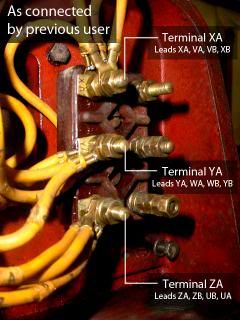
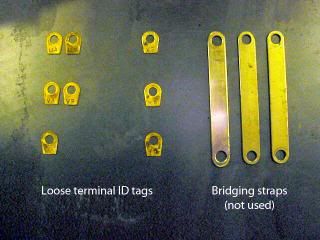
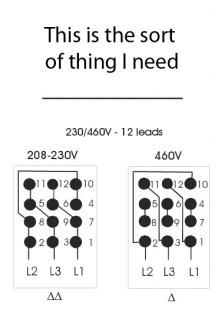
I'd be grateful for any comments or advice.
SD.
I've been lurking in the shadows here for a long time but this will be my first post.
I'm waking up an old Martin lathe that's been in storage by a previous owner. I am about to connect its twelve-lead, three-phase motor to a 240V, three-phase mains supply. I have a basic knowledge of electricity but before trying what I suspect is correct and flipping the switch, I'd like to ask those having more experience to consider my assumptions. The motor has a data plate indicating that it is compatible with either 220 or 440V three-phase; there is however no diagram or schematic anywhere explaining connection of the motor for different mains voltages.
I've contacted the motor manufacturer (Schorch of Germany) but they were "not able to find documentation on this motor because it is at least 40 years old". They also stated that "this is a 3-phase motor with only “one winding” (4 poles/one speed) but in a special design for 2 different voltages, double delta and delta".... One winding??? Closing comment: "Please check the windings by an ohm meter and put the right ones together."
The previous user had the twelve leads coming from the motor's winding(s) separated into three groups, each group consisting of four leads; I don't know for certain if it was last run on 220 or 440V. I can use an ohm meter to verify that the leads in each group go to a common winding; I have not yet done this. I can then refer to shematics from other manufacturers of 12-lead motors wired for 220V (see last image; to be clear, the diagram is from another motor manufacturer). From this, I can deduce that the wiring of my motor is most likely already correctly configured for 220V three-phase.
The leads are individually labeled and and all markings are clearly legible. The junction terminals have little stamped brass identification tags. Three of these tags are attached to the three terminals being used; the rest were laying loose in the junction box.
Here are some images:







I'd be grateful for any comments or advice.
SD.
Last edited:

